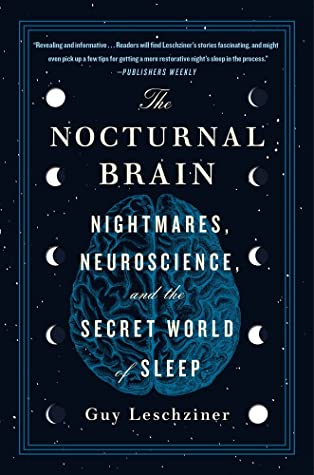
The Nocturnal Brain
Nightmares, Neuroscience, and the Secret World of Sleep
کابوسها، عصبشناسی و دنیای پنهانی خواب
کتاب های مرتبط
- اطلاعات
- نقد و بررسی
- دیدگاه کاربران
نقد و بررسی

April 1, 2019
In this revealing and informative debut, British neurologist and sleep physician Leschziner brings readers into the lab to learn about all manner of sleep disorders experienced by people he’s treated, his methods of treating them, and the role sleep plays in health. Disorders discussed range from the relatively common sleep apnea, sleep deprivation, and narcolepsy, to more unusual ones like those suffered by Vincent, diagnosed with non-24-hour rhythm disorder, which results in an ever-shifting sleep pattern; Adrian, a man who collapses into sleep whenever he laughs; and Tom, a “sexsomniac” who sometimes makes unwelcome, aggressive, and, in comparison with his waking personality, out of character sexual advances against his partners while asleep. Leschziner uses these and other cases to not only define the disorders in relatable ways, but to outline his plan of treatment for each patient and extrapolate the significance for sleep in its largest sense: its importance in everyone’s lives. Readers will find Leschziner’s stories fascinating, and might even pick up a few tips for getting a more restorative night’s sleep in the process. George Lucas, Inkwell (on behalf of Luigi Bonomi Associates).

May 15, 2019
A fine popular-science account of sleep, mostly about when it goes wrong. "We think of sleep as a tranquil act, when our minds are stilled and our brains are quiet," writes Leschziner, a consulting neurologist and sleep physician at Guy's Hospital in London. He continues, "the only awareness we might have of something happening in the night are the fragments of a dream." Of course, like the author, most readers know that this is not the case. The author follows a straightforward format. Each chapter features a patient who describes their miseries, usually accompanied by frustrating visits to a clueless family doctor. The author investigates, makes the correct diagnosis, and describes the sometimes-happy outcome, all accompanied by asides to the reader explaining the science. Many sleep disorders are forms of brain disease. Narcolepsy, which causes intense daytime sleepiness, may be caused by the lack of a chemical that regulates wakefulness. Some problems occur when systems are out of sync. Dreaming occurs during a sleep stage when the body is paralyzed--which is why it's difficult to cry out or move during a nightmare. Without paralysis, dreamers get up and do bizarre things. When paralysis occurs during waking, victims fall down; it's called cataplexy. Even in a healthy brain, sleep and wakefulness are not clearly separate states, so almost everyone experiences lucid dreaming, odd sensory experiences that verge on hallucinations. Problems arise when parts of the brain controlling movement and emotion wake while regions influencing rational thinking remain asleep. Sleepwalking is the best known phenomenon, but there are others, including sleep talking, sleep eating, and night terrors. Cures do occur, and many disorders respond to lifestyle changes, but others require the permanent use of drugs and/or devices. Most American writers would deal with the cost of treatment, but Leschziner works under the British National Health Service, so readers must be satisfied with entertaining stories and a painless education on the nature of sleep and its malfunctions. Not groundbreaking but a useful entry in sleep-disorder literature.
COPYRIGHT(2019) Kirkus Reviews, ALL RIGHTS RESERVED.

July 1, 2019
London-based neurologist and sleep physician Leschziner, voice of the BBC radio series Mysteries of Sleep, offers a highly readable collection of case studies on the various types of sleep disorders and the state of current medicine in treating the conditions. After an introduction to the world of sleep, explaining the way normal sleep occurs, and suggesting some of the psychological and biological factors both affecting and being affected by sleep and its disorders, the author turns over the remainder of the book to individual case studies. Each patient's case richly illustrates a different type of sleep disorder--e.g., narcolepsy, restless leg syndrome, nocturnal epilepsy--and its consequences, concluding with a discussion of the author's treatment plan and the current state of sleep science in that arena. The glossary of sleep-related medical terms is welcome. While not a self-help book to solve one's sleep issues, this fascinating collection of individuals' stories helps to peel back the curtain that shrouds the world of sleep. VERDICT Leschziner's engaging style strikes just the right balance between storytelling and popular science and will appeal to a broad audience.--Crystal Renfro, Kennesaw State Univ., Marietta, GA
Copyright 2019 Library Journal, LLC Used with permission.

























دیدگاه کاربران